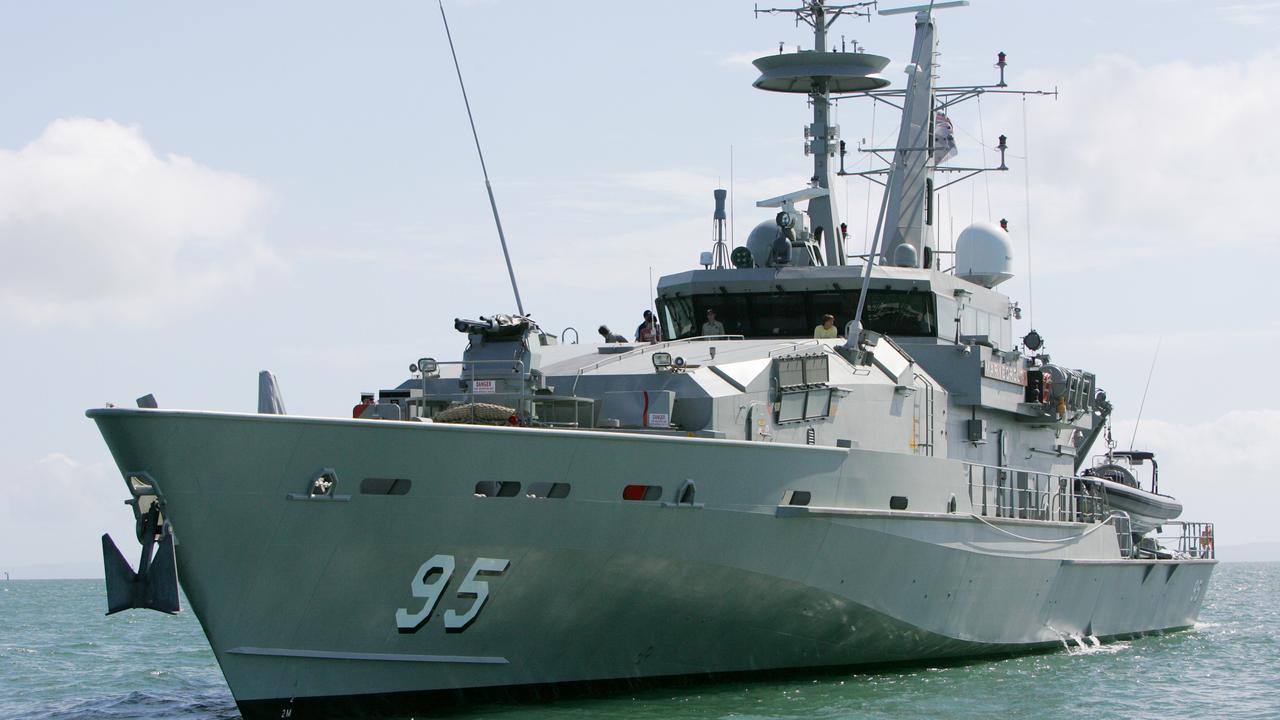Long boom ahead: ‘need’ for manufacturing restructure
Australia’s aerospace and defence industry has entered a likely long boom with a claimed need for bigger manufacturers.

Australia’s aerospace and defence industry has entered a likely long boom with a claimed need for more middle-level manufacturers capable of taking big subcontracts from the global primes — and they may be emerging.
About a dozen international prime contractors and their major subcontractors, or subprimes, dominate the Australian sector. Below are hundreds of companies with fewer than 25 employees.
The local industry has “relatively few” medium-sized businesses, notes the government’s 2018 Defence Industrial Capability Plan. It contrasts this “unique” structure with the US, Britain and Canadian industries, which it calls “middle/top heavy”.
Australia’s aircraft manufacturing and repair sector’s 13,000-strong workforce is scattered across 913 businesses, the market research firm IBISWorld says.
Does it matter that Australian-owned companies are largely at the bottom of an industry pyramid?
Mike Kalms, KPMG’s lead partner for defence and member of the expert panel that oversaw the 2016 Defence Department policy white paper, says Australia needs to develop “a new echelon of defence mediums” that can handle billion-dollar subcontracts.
Most local manufacturers and service providers in defence and aerospace are sub-$20 million-a- year businesses — and 80 per cent do defence work infrequently, Kalms says. Local companies that “creep up into the $200 million-plus revenue category” tend to be bought by global players, he says.
“There are very few examples of Australian defence businesses that have got into that space and remained relatively independent,” Kalms says.

“I do think it's important Australia develops a new wave of $100m-$300m businesses that employ Australians, generate revenue and create intellectual property that is sovereign to Australia, developing our next generation of game-changing technologies for the defence and commercial sectors.
“The lack of mid-size service and manufacturing companies limits — in the long term — our ability to create a sovereign and independent defence capability,” Kalms says.
Defence Industry Minister Steven Ciobo says he is “very confident’’ existing policy levers will result in the rise of mid-tier Australian defence businesses.
Ciobo says the $200 billion Defence Department asset-spending program combined with direct government support through the defence export strategy and global supply-chain program have given Australian businesses “the best opportunity to scale up for many, many years’’.
“The government has put in place the Australian Industry Capability component [to defence spending], we are the ones requiring defence primes to utilise Australian businesses. That will help these businesses achieve scale to secure export-led growth,’’ he says.
Ciobo says the local defence-aerospace industry is “incredibly optimistic about the future’’.
“As we continue to see primes engaging with Australian industry — and as we can talk increasingly of the success of the supply-chain initiative — it will create a beneficial cycle for all defence businesses to be able to grow and scale up.’’
The Australian Industry Group’s head of manufacturing, Mark Goodsell, says developing mid-level companies will be a “key marker” of the success of the government’s defence industry policy.
Goodsell, who is also executive director of the Australian Advanced Manufacturing Council, says the government should look at “clustering” of small and medium enterprises, funding system-integrator companies and giving incentives to big companies that have already built an industrial base in the country.
Old procurement models that relied on global primes and a myriad of offshore and local suppliers “did little to develop a robust, locally based second tier of suppliers, particularly system integrators, and did not support export penetration,” he says.
Kalms will facilitate a workshop at this week’s Avalon 2019 Australian International Airshow and Aerospace and Defence Exposition. He welcomes the “largely bipartisan” policy commitment to grow Australia’s aerospace and defence industry. Programs such as the federal government’s Next Generation Technology Fund, Centre for Defence Industry Capability and Defence Innovation Hub “do great things to help business grow, hire and create IP [intellectual property]”.
What’s missing, he argues, is “a formal stated aspiration to grow a strong Australian middle. I would like to see government and industry stand up to that kind of ambition and be more focused on what the Australian industry should look like at the end of this transformation.”
There are signs an emerging breed of entrepreneurs will go on to build middle-ranking defence and aerospace businesses, Kalms says.
“There is something different about the way Australian business is mobilising for opportunities now. I can't think of a time when we saw start-ups and established businesses entering the defence and commercial aerospace sectors at such a rate.”
Joint ventures and other alliances can help aerospace and defence businesses get bigger. Two small Melbourne-based firms, BEAK Engineering and Decon Systems, together have developed a new ground power unit (GPU) for commercial aviation. The hybrid fuel/battery unit will be unveiled at the Avalon airshow.
BEAK supplies GPUs to Qantas and is the only Australian company making them for military aircraft. With 17 employees, BEAK also services the navy’s Recovery Assist, Secure and Traverse helicopter landing system made in Canada by the US-based Curtiss-Wright.
BEAK’s chief financial officer, Kal Desai, says Australia “definitely” should encourage the development of medium-size companies in defence and commercial aerospace.
“It’s a struggle to move from a $10m-$50m company to a $200m-$300m company,” he says. "The JV with Decon allows us to tender for contracts we previously didn't have the scale or skills for. We have more resources for field service work and we can manufacture faster because we have access to larger premises and more personnel.
"A lot of local companies getting a tiny piece of defence work are trying to get a bigger piece and develop local products for export via alliances."
Kalms says collaboration between industry, universities and government is “starting to become part of our DNA and the normal way of doing business”.
It has already helped small companies create new technologies, products and services that are sold domestically and globally, he says.
Twelve years ago, Axiom Precision Manufacturing received most of its work from the then-bigger automotive industry. Now, aerospace and defence clients provide 95 per cent of the Adelaide-based company’s work.
Axiom supplies BAE Systems with machined titanium components for the vertical tails of F-35 joint strike fighters and Boeing Defence with parts for CH-47 Chinook helicopters. Axiom learnt the industry and made contacts by joining the Defence Teaming Centre, an industry association in South Australia.
“Being a member of DTC allows us to team with other defence contractors and show the primes we have a creditable network of suppliers,” Axiom aerospace and defence manager Fred Hull says.
“For example, we can show them who is going to be doing the heat treating or surface coating for the parts we are machining.”
He thinks the “lumpiness” of the project-driven industry partly explains the lack of a major middle. “However, we now have a range of long-term defence projects that will have a lot of Australian industry content,” he says.
“That should allow small manufacturers to grow into those mid-size companies.” Axiom has bought land on which to erect two more factory buildings and expects to grow from 63 employees to 100 by the end of 2020, Hull says.
“Australia has a reputation for producing quality aircraft components and is a trusted manufacturer for many global aviation firms,’’ consultancy IBISWorld says in public extracts of its December 2018 report, Aircraft Manufacturing and Repair Services.
It observes of the industry’s positives: “Component manufacturing for military aircraft has supported many industry operators; government capital expenditure on defence is anticipated to increase strongly.’’
But “the industry is largely at the mercy of contractual arrangements, with maintenance and repair service contracts and contracts to produce aircraft parts and smaller aircraft the key drivers behind revenue growth.
“The industry has a high level of concentration, with large multinational aerospace firms dominating, and barriers to entry are relatively high. Scalability, unit costs and ability to obtain long-term contracts are keys to success,’’ it says.






To join the conversation, please log in. Don't have an account? Register
Join the conversation, you are commenting as Logout